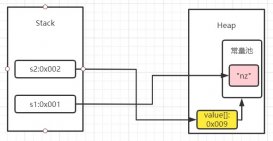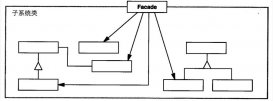list集合进行排序时,很多人会考虑冒泡、快速等排序算法,但是对于多重排序规则的话,算法就不太适用了。其实java.util.collections已经提供了sort的排序方法,并且能自己实现其排序规则。
现在有个场景:我需要对一批优惠券进行排序,优惠券有三个属性:是否可用、券类型、面额。我需要将可用的、券类型最大的、面额最大的券排到最前面。
即优先按是否可用排序,其次是券类型,再者就是面额。
话不多说,看代码吧:
|
1
2
3
4
5
6
7
8
9
10
11
12
13
14
15
16
17
18
19
20
21
22
23
24
25
26
27
28
29
30
31
32
33
34
35
36
37
38
39
40
41
42
43
44
45
46
47
48
49
50
51
52
53
54
55
56
57
58
59
60
61
62
63
|
package com.test;import java.math.bigdecimal;import java.util.arraylist;import java.util.collections;import java.util.comparator;/** * list多重规则排序测试类 */public class testcompartor { public static void main(string[] args) { arraylist<coupon> persons = new arraylist<coupon>(); persons.add(new coupon(13,0,new bigdecimal(40))); persons.add(new coupon(13,0,new bigdecimal(50))); persons.add(new coupon(13,0,new bigdecimal(45))); persons.add(new coupon(1,0,new bigdecimal(20))); persons.add(new coupon(13,1,new bigdecimal(30))); persons.add(new coupon(1,0,new bigdecimal(25))); persons.add(new coupon(11,0,new bigdecimal(50))); persons.add(new coupon(11,1,new bigdecimal(40))); system.out.println("排序之前:"); for (int i = 0; i <persons.size(); i++) { system.out.println(persons.get(i)); } system.out.println(); collections.sort(persons, new comparator<coupon>() { //按可用升序,券类型降序,面额降序 public int compare(coupon o1, coupon o2) { if (o1.valueable.compareto(o2.valueable)==0){ if(o2.themetype.compareto(o1.themetype)==0){ return o2.amount.compareto(o1.amount)>0?1:-1; }else{ return o2.themetype - o1.themetype; } }else{ return o1.valueable-o2.valueable ; } } }); system.out.println("排序后结果:"); for (int i = 0; i <persons.size(); i++) { system.out.println(persons.get(i)); } } static class coupon{ public integer themetype; //优惠券类型 public integer valueable; //可用 ,0 可用,1不可用 public bigdecimal amount; //面额 @override public string tostring() { return "person{" + "themetype=" + themetype + ", valueable=" + valueable + ", amount=" + amount + '}'; } public coupon(integer themetype, integer valueable, bigdecimal amount) { super(); this.themetype = themetype; this.valueable = valueable; this.amount = amount; } }} |
至于封装工具类我就懒得弄了,有需要的自己封装吧。
这里如果用了integer等封装类型,最好自己也做下非空处理。
排序之前:
person{themetype=13, valueable=0, amount=40} person{themetype=13, valueable=0, amount=50} person{themetype=13, valueable=0, amount=45} person{themetype=1, valueable=0, amount=20} person{themetype=13, valueable=1, amount=30} person{themetype=1, valueable=0, amount=25} person{themetype=11, valueable=0, amount=50} person{themetype=11, valueable=1, amount=40}
排序后结果:
person{themetype=13, valueable=0, amount=50} person{themetype=13, valueable=0, amount=45} person{themetype=13, valueable=0, amount=40} person{themetype=11, valueable=0, amount=50} person{themetype=1, valueable=0, amount=25} person{themetype=1, valueable=0, amount=20} person{themetype=13, valueable=1, amount=30} person{themetype=11, valueable=1, amount=40}
总结
以上就是这篇文章的全部内容了,希望本文的内容对大家的学习或者工作具有一定的参考学习价值,谢谢大家对服务器之家的支持。如果你想了解更多相关内容请查看下面相关链接
原文链接:https://blog.csdn.net/moneyshi/article/details/71108140















